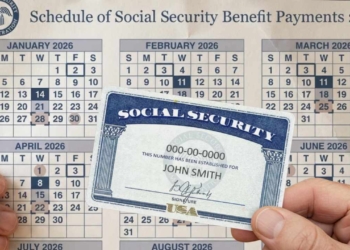For the estimated 22 million Americans born between the 1st and 10th of any month, the second Wednesday of October marks a reliable milestone: the arrival of their Social Security retirement deposits. This year, that date falls on October 8th, when bank account deposits (or Direct Card deposits) and mailed payments will hit accounts across America.
These Social Security payments provide essential financial support to retirees who have spent decades building the country s infrastructure, economy, and communities. It’s a process as predictable as the changing seasons, yet one that underscores the program s role as a cornerstone of economic stability for older adults.
How Social Security Payments Are Structured
The Social Security Administration, or SSA, arranges the payment schedule based on the day of the month a beneficiary was born, a system designed to spread out disbursements and ease the load on banks and the postal service.
For October 2025, those born on the 1st through 10th receive payments on October 8th; the 11th through 20th on October 15th; and the final group is for those with birthdates from 21st through 31st, with payment on October 22nd.
This calendar, outlined annually by the SSA, ensures that the program s 1.4 trillion in yearly benefits flow smoothly to its 72.5 million recipients, including retirees, disabled workers and survivors.
Calculating the Social Security Benefit Amount
The amounts themselves tell a story of variability shaped by lifetime earnings, claiming age and adjustments for inflation. For 2025, the maximum monthly retirement benefit at full retirement age 67 for most workers born after 1960 stands at $4,018. This peak is achievable only for those who earned the maximum taxable wages for 35 years and claim exactly at full retirement age.
Delaying until age 70 will bump that amount to as much as $5,108, thanks to delayed retirement credits that add 8 a year past full retirement age. On the lower end, claiming as early as 62 reduces the benefit by up to 30, capping the maximum at 2,831 for that year.
Average Benefits: Disparities Among Recipients
The average tells a more representative tale. As of January 2025, following a 2.5% cost of living adjustment COLA , the estimated average monthly benefit for retired workers is $1,976. By August, SSA data showed the actual average climbing to 2,008.31, reflecting a mix of new claims, adjustments, and the COLA s impact across the board.
These figures vary by demographics: women, on average, receive about 1,500 less annually than men due to historical wage gaps and career interruptions for caregiving. For couples where both spouses qualify, the combined average reaches 3,089.
Broader Economic Impact and Challenges
Beyond the numbers, Social Security s reach is profound. It lifts 22 million seniors out of poverty annually, injecting vital funds into local economies from rural towns in Iowa to bustling suburbs in Texas. The 2025 COLA, while modest at 2.5%, adds about 50 monthly to the average payment, helping offset rises in everyday costs like groceries and healthcare.
The SSA processes these payments with remarkable efficiency, handling 4 million new claims each year through a network of 1,500 field offices and an expanding online portal. Of course, challenges persist. Inflation, hovering around 2.4 in recent months, erodes purchasing power, and workforce shifts including gig economy jobs with spotty contributions could strain future funding.
Meanwhile, there’s a problem in the horizon: The SSA s trustees project the trust fund will cover full benefits until 2035, after which revenues would support about 80% of scheduled payments without congressional action. Bipartisan ideas, such as gradually raising the payroll tax cap from $176,100, are under discussion to bridge the gap.







